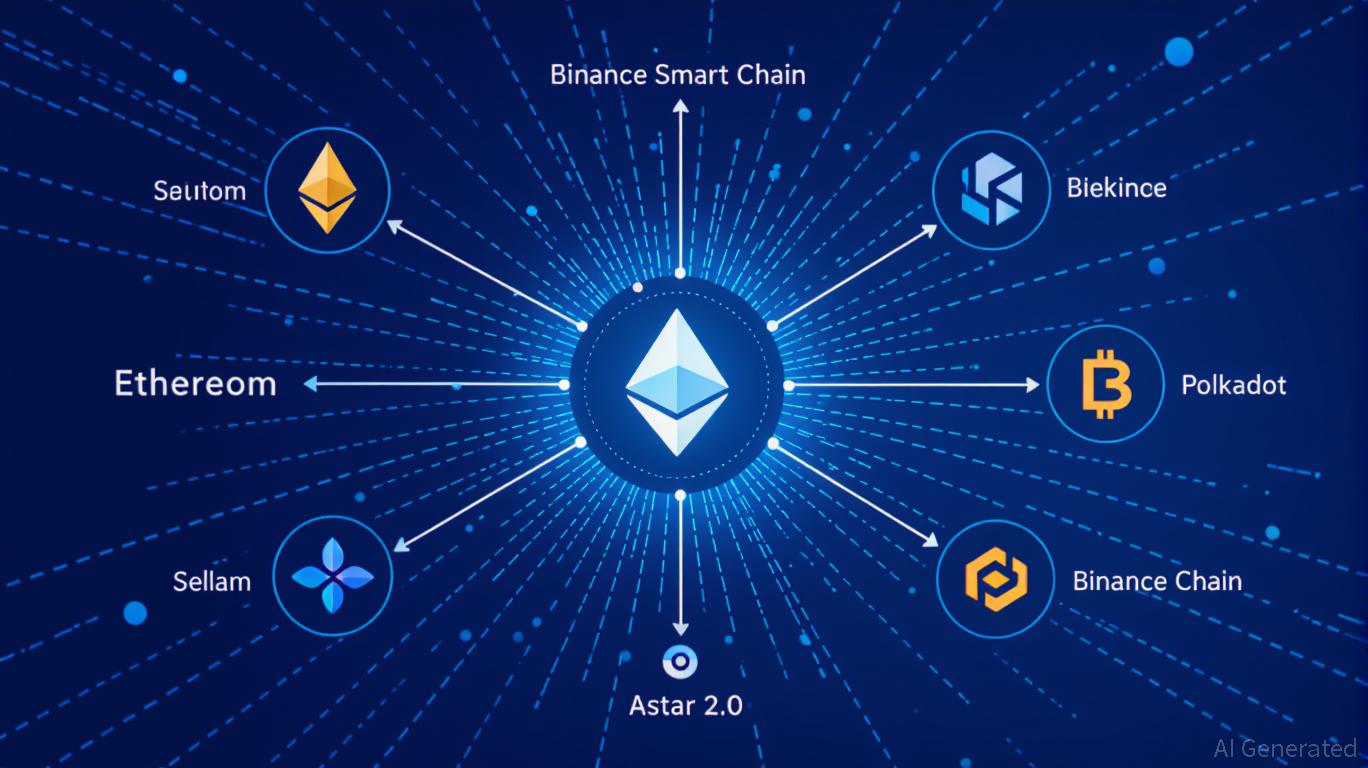Three Countries, Distinct Approaches: APAC's Cryptocurrency Surge Fueled by Varied Strategies
- Japan, South Korea, and India drive APAC's crypto boom, with on-chain transactions surging to $244B by 2024, outpacing North America. - Japan's 120% YoY growth stems from regulatory reforms and XRP adoption, while South Korea's $10K–$1M "professional" trades dominate 50% of volume. - India leads with $338B in grassroots and institutional crypto activity, leveraging fintech integration despite regulatory hurdles like Tax Deducted at Source. - Divergent strategies—Japan's regulation, South Korea's speculat

Japan, South Korea, and India are redefining the landscape of cryptocurrency adoption in the Asia-Pacific (APAC) region, each influenced by unique regulatory policies, market forces, and grassroots enthusiasm. The 2025 Geography of Cryptocurrency Report from Chainalysis reveals that APAC’s on-chain transaction volume soared from $81 billion in July 2022 to $244 billion by December 2024, with these three nations contributing substantially to this expansion. APAC has now emerged as the world’s fastest-growing crypto market, often surpassing North America and second only to Europe in transaction activity.
Japan’s cryptocurrency sector experienced a 120% annual rise in on-chain value received, overtaking Indonesia, South Korea, and Vietnam. This surge is largely due to regulatory advancements, such as the approval of yen-pegged stablecoin issuers and revisions to crypto taxation policies. The nation’s emphasis on
South Korea’s crypto market stands out for its dominance by professional traders and a notable increase in stablecoin transactions. On-chain trades valued between $10,000 and $1 million—deemed “professional” activity—make up nearly half of the nation’s total crypto volume, reflecting a sophisticated trading environment typical of developed economies. Stablecoin usage has also grown swiftly, with KRW-backed stablecoins receiving $59 billion on-chain in the year leading up to June 2025. Platforms such as Bithumb and Coinone have introduced USDT/KRW trading pairs, pushing trading volumes up by more than 50% in early 2025. Nonetheless, regulatory guidelines remain unclear, especially concerning stablecoin distribution and secondary trading, which experts believe are essential for ongoing growth.
India leads the APAC crypto scene, ranking first in the 2025 Global Adoption Index. The country’s on-chain transaction value hit $338 billion, fueled by widespread grassroots participation and institutional breakthroughs. Grassroots involvement includes young professionals trading crypto for extra income and communities using blockchain for small-scale financial solutions. Institutional momentum is supported by a strong fintech sector, with tools like UPI and eRupi making it easier to incorporate crypto into daily transactions. Despite obstacles such as the Tax Deducted at Source policy and limitations on foreign exchanges, India’s crypto activity remains robust, with organizations like the Bharat Web3 Association advocating for its recognition as a secure means of value transfer.
The varied approaches to crypto adoption in these three countries underscore APAC’s significance as a global trendsetter in the evolution of digital assets. Japan’s growth driven by regulation, South Korea’s speculative trading environment, and India’s blend of grassroots and institutional participation illustrate how different economic and cultural backdrops influence crypto usage. As these markets evolve, their development is set to shape worldwide trends, especially in balancing innovation with effective regulation.
Disclaimer: The content of this article solely reflects the author's opinion and does not represent the platform in any capacity. This article is not intended to serve as a reference for making investment decisions.
You may also like
Bitcoin News Update: CFTC's Broader Role in Crypto Regulation Ignites Discussion on Clearer Rules
- U.S. lawmakers propose expanding CFTC's crypto oversight via a bill reclassifying spot trading, diverging from SEC's enforcement approach. - Harvard University invests $443M in BlackRock's IBIT ETF, reflecting institutional confidence in crypto as a legitimate asset class. - DeFi projects like Mutuum Finance raise $18.7M in presales, leveraging regulatory momentum and transparent on-chain credit systems. - RockToken's infrastructure-backed crypto contracts attract long-term investors with structured yiel

DASH Aster DEX's Latest On-Chain Growth and What It Means for DeFi Liquidity
- DASH Aster DEX leads 2025 DeFi shift with hybrid AMM-CEX model and multi-chain support (BNB, Ethereum , Solana), boosting TVL to $1.399B and Q3 daily trading volumes of $27.7B. - Platform's 1,650% ASTER token price surge post-TGE attracted 330,000 new wallets, with 94% of BSC-USD volume ($2B/day) driving institutional adoption via Binance/YZi partnerships. - ASTER token mechanics enable 80% margin trading, 5-7% staking rewards, and governance rights, while annual 5-7% fee burns create scarcity and align

Astar 2.0: Leading a New Generation of DeFi and Cross-Chain Advancements
- Astar 2.0 introduces a zkEVM mainnet and cross-chain interoperability, slashing gas fees and enabling 150,000 TPS with 2025 scalability goals. - Strategic partnerships with Mazda, Japan Airlines, and Sony demonstrate blockchain's real-world applications in logistics, loyalty programs, and digital asset tokenization. - Q3 2025 data shows $2.38M DeFi TVL growth and 20% active wallet increase, alongside a $3.16M institutional ASTR token acquisition. - The platform aims to solidify its role as a foundational

Aster DEX Introduces New On-Ramp: Transforming Retail Participation in DeFi
- Aster DEX integrates institutional-grade custody and privacy tech (zero-knowledge proofs) to bridge retail-institutional DeFi gaps via BNB Chain partnerships. - TVL surged to $2.18B by late 2025 through yield-bearing stablecoins and hidden orders, attracting both retail and institutional liquidity. - Despite compliance gaps and wash trading concerns, Aster's Binance alignment and Coinbase listing signals growing institutional validation.
